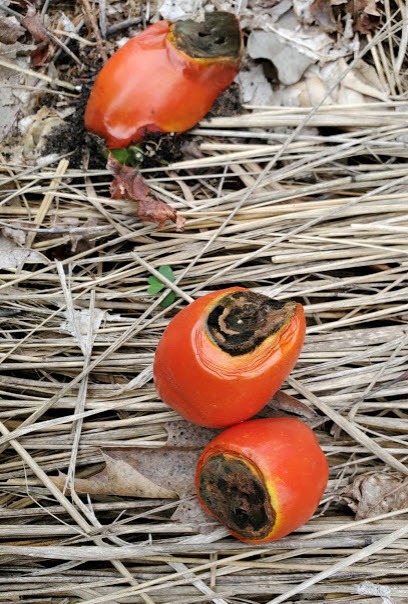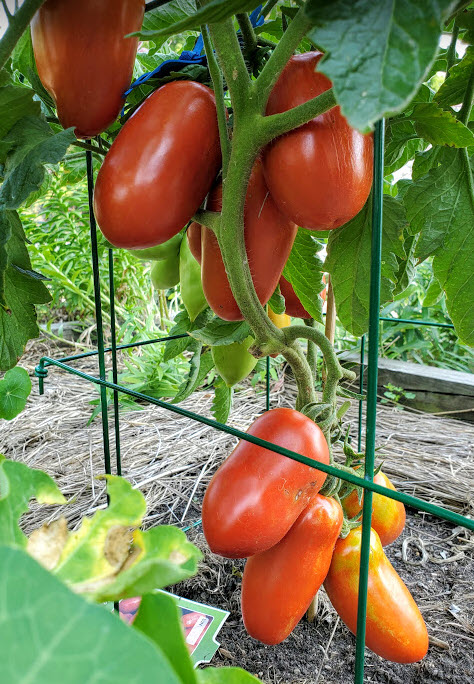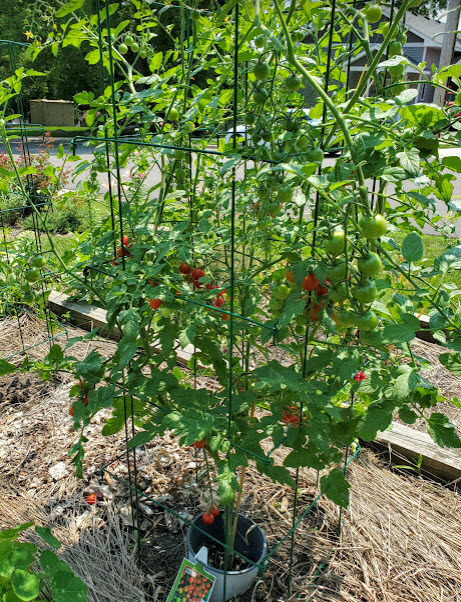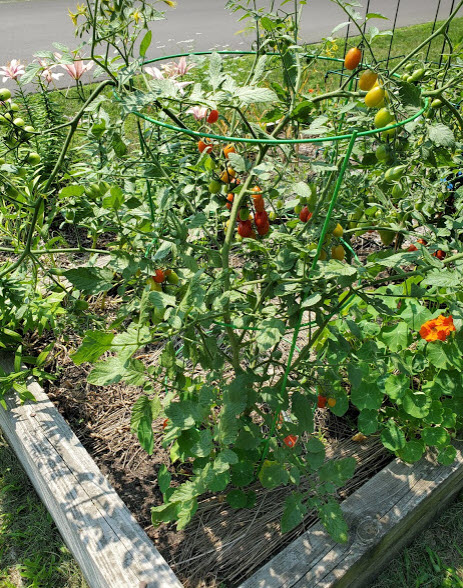Click below to listen to my 2 min. Garden Bite radio show: Blossom end rot
Audio PlayerUgh, blossom end rot….

My romas went crazy (as have all the types of tomatoes I planted this year). However, this black stuff bugs me! So, what is blossom end rot?
It’s a calcium deficiency. Oddly that doesn’t mean there’s not enough calcium in the soil. Uneven watering and rapid early growth of the plants can also cause the rot because the calcium is needed by the tomatoes when they are actively growing and the plants may not be able to take up sufficient calcium quickly enough through the roots. Which is what I THINK happened to my Roma. It grew very quickly with a lot of fruit production early on.

Blossom end rot first appears as water- soaked spots on the blossom end, or bottom, of the tomato. The affected tissue breaks down rapidly and the area becomes sunken, dark brown or black, and leathery. This can happen at any time as the tomatoes mature, and most often on the first tomatoes of the season. NOTE: this issue has ONLY affected the roma tomatoes.


There are foliar sprays but they only help BEFORE the tomato has blossom end rot, and, as you’ll see from this article from the University of Minnesota Extension on Tomato disorders, there’s disagreement on how well they work.
If you start to see this problem, remove the affected fruit, spray the rest of the plant. I removed the offending fruit but I have not used any spray. The rest of the tomatoes are looking very good as you can see in the photo above! YAY.
Now here’s a look at my ‘Heirloom Cherokee Purple’… major cracking on the top


Extremely fast fruit growth can cause growth cracks. This may be caused by periods of abundant rain and high temperatures, or can happen when it rains or you water plants after a period of drought. This plant was going gangbusters… too quickly. Still, I’m managing it. There are more tomatoes on the plant and I’ll be able to get some parts of the fruit!
